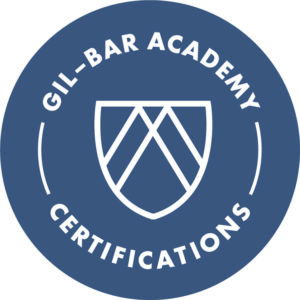High Performance Heat Pumps Are Here
By Joe Kalina, Sales Engineer, Gil-Bar Industries
The Future of NYC HVAC Design
As an engineer and salesperson, I am always on the lookout for new solutions that work for both our customers and the environment. Recently, I’ve gotten excited about the new YMAE Air-to-Water Inverter Scroll Modular Heat Pump launched by York.
The New York City market has been asking for a product like this for the past five years. With electrification and decarbonization changing the landscape of HVAC design, this product will help in accomplishing the aggressive carbon neutral goals of Local Law 97. A leap in development from the 2021 ACR Awards Heat Pump Product of the Year, the new YMAE-130 produces 140 °F hot water at the highest COP in the category. It also promises to deliver the broadest operating envelope in the market, and that means maximum flexibility across different applications. Combined with the use of ultra-low GWP refrigerant, R-454b, the YMAE is a sustainable, high-performance solution for building owners and engineers wanting to minimize their environmental impact.
So What Are The Specs?
- Inverter vapor injection compressors on both circuits as standard (individually circuited compressors under 15HP) and ECM condenser fans. Part load turndown to 10% of design capacity.
- 2-Pipe (heating or cooling mode) and 4-Pipe (simultaneous heating and cooling mode)
- 4-Pipe operation is not solely reliant on energy recovery from internal loads – the condenser will aid in maintaining both chilled water and hot water LWT setpoints as needed with both setpoints individually controlled. This allows for a wide range of new construction and retrofit applications.
- Modular flexibility with up to 4 modules factory packaged on a skid with single point power. Up to 32 modules can be controlled as a single chiller bank.
- R454B next generation low GWP refrigerant allowing for shipment after the 2023/2024 chiller HFC refrigerant ban.
- Condenser fan external static pressure capabilities up to 0.4” allowing for indoor installations behind louvers.
- Capacity per 4-pipe module at AHRI conditions:
- 35 tons cooling @ 44°F water
- 546 MBH heating @ 105°F water
- Combined COP of 7.9
- Cooling operation IPLV greater than 20
- Achieves 131°F @ 5°F
- Maximum 140°F @ 14°F
- Ideally suited to reduce the environmental impact of schools, hotels, offices, hospitals, and multi-unit residential applications by replacing fossil fuel boilers with high performance heat pump technology.
Gil-Bar is excited to add the YMAE to its extensive air source heat pump portfolio with its groundbreaking new technology. Delivering heating capacities and efficiencies at design conditions is something the NYC market has needed in a modular package, and now it’s here.
Joe Kalina is a sales engineer at Gil-Bar Industries. Part of the Ambient HVAC Collective, Gil-Bar has been the HVAC solutions company that offers greater expertise and commitment than any other firm, and is NYC Metro’s expert on York products and solutions.



